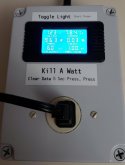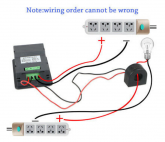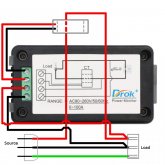SCClockDr
Solar Enthusiast
I was not keen on the reviews for the P3 "Kill-A-Watt" meter based on the Amazon reviews. So I bought these:



- AC Digital Meter, DROK Current Voltage Amperage Power Energy Frequency Factor Multimeter
- Leviton 5361-I 20 Amp, 125 Volt, Industrial Heavy Duty Grade, Single Receptacle
- Ogrmar Plastic Dustproof IP65 Junction Box DIY Case Enclosure (6.9"x 4.9"x 3")
- [3PACK] 90 Degree USA Canada Male Plug Nema 5-15P 3 Pole Angle DIY Plug
- 4' of 12AWG industrial extension cord from the local Ace store.
- Bits & pieces from my ready spares/consumables supply.










